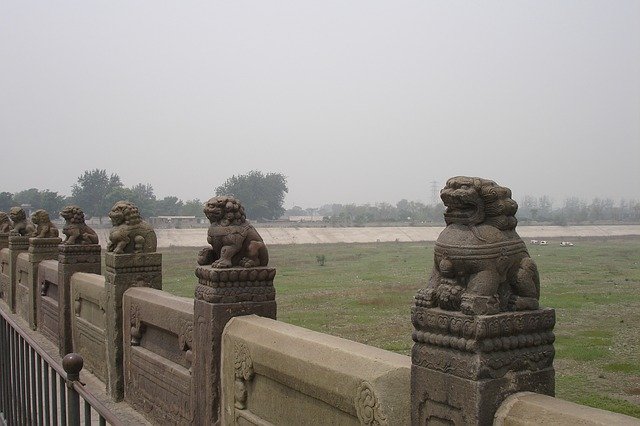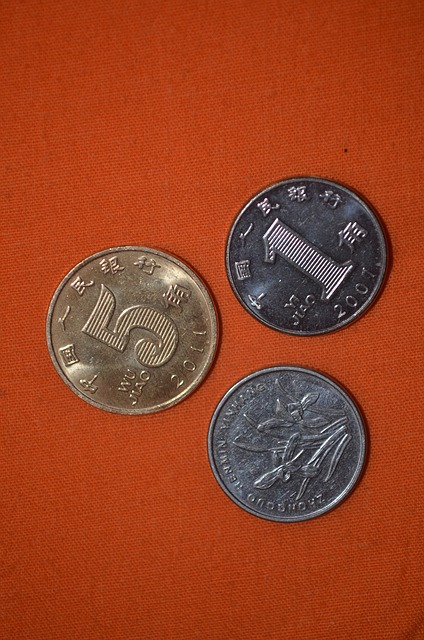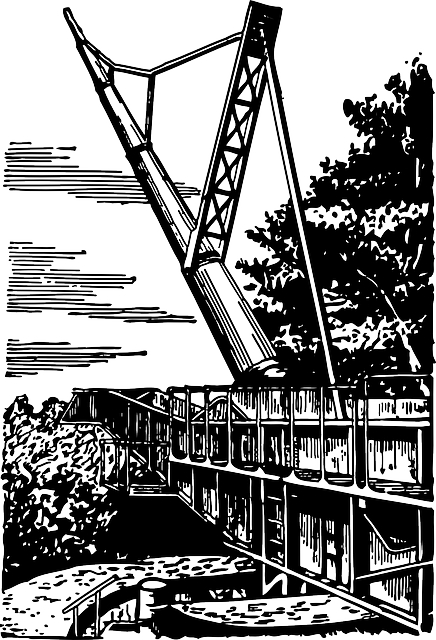اقتصاد السوق الاشتراكي
| اقتصاد السوق الاشتراكي | |||||||
|---|---|---|---|---|---|---|---|
| صينية مبسطة | 社会主义市场经济 | ||||||
| صينية تقليدية | 社會主義市場經濟 | ||||||
| |||||||
| جزء من سلسلة عن |
| الأنظمة الاقتصادية |
|---|
|
حسب الأيديولوجيا
|
|
حسب التنسيق
|
|
حسب النمط الإقليمي
|
|
القطاعات
|
|
أنواع الملكية
|
|
التحول
|
|
التنسيق
|
|
أنواع أخرى
|
|
جزء من عن |
|---|
|
التيارات
الأفريقية • العربية
Democratic • Green • Guild Libertarian • Market Revolutionary • Utopian Communism Social anarchism Social democracy Socialist market economy تيتوية |
|
مواضيع وقضايا رئيسية
الأنواع
التاريخ الاقتصاد الدولة انتقادات |
|
المنظمات والشعوب
الأممية الثانية
الأممية الرابعة الأممية الاشتراكية International Socialist Organization
World Federation of Democratic Youth International Union of Socialist Youth
|
|
البوذية • المسيحية
الإسلامية • اليسار اليهودي |
|
مواضيع ذات علاقة
فوضوية • Autogestion
صراع الطبقات ديكتاتورية الپرولتاريا مساواة • Equality of outcome Impossibilism • الأممية ماركسية • ثورة الپرولتاريا Socialism in One Country نقابة عمال • Utilitarianism |
'اقتصاد السوق الاشتراكي' ، هوالنظام الاقتصادي ونموذج التنمية الاقتصادية المستخدمة في جمهورية الصين الشعبية. يعتمد النظام على هيمنة الملكية العامة والشركات المملوكة للدولة داخل اقتصاد السوق. استخدم مصطلح "اقتصاد السوق الاشتراكي" لأول مرة خلال المؤتمر الوطني الرابع عشر لـ الحزب الشيوعي الصيني في عام 1992 لوصف هدف الإصلاحات الاقتصادية في الصين. انطلاقًا من الإصلاحات الاقتصادية الصينية التي بدأت عام 1978 والتي دمجت الصين في اقتصاد السوق العالمي ، يمثل اقتصاد السوق الاشتراكي الفترة الأولية أو"الفترة الأولية" من تطوير الاشتراكية. على الرغم من ذلك ، فقد وصف الكثير من المعلقين الغربيين النظام بأنه شكل من أشكال رأسمالية الدولة.
الوصف
The economic reform toward a socialist market economy is underpinned by the Marxist framework of historical materialism. In the late 1970s, then-Chairman Deng Xiaoping and the Communist Party leadership rejected the prior Maoist emphasis on culture and political agency as the driving forces behind economic progress and started to place a greater emphasis on advancing the material productive forces as the fundamental and necessary prerequisite for building an advanced socialist society. The adoption of market reforms was seen to be consistent with China's level of development and a necessary step in advancing the productive forces of society. This aligned Chinese policy with a more traditional Marxist perspective where a fully developed socialist planned economy can only come into existence after a market economy has exhausted its historical role and gradually transforms itself into a planned economy, nudged by technological advances that make economic planning possible and therefore market relations less necessary.
The socialist market economy is seen by the Communist Party of China as an early stage in the development of socialism (this stage is variously called the "primary" or "preliminary" stage of socialism), where public ownership coexists alongside a diverse range of non-public forms of ownership. The Communist Party of China maintains that despite the co-existence of private capitalists and entrepreneurs with public and collective enterprise, China is not a capitalist country because the party retains control over the direction of the country, maintaining its course of socialist development. Proponents of this economic model distinguish it from market socialism as market socialists believe that economic planning is unattainable, undesirable or ineffective and thus view the market as an integral part of socialism whereas proponents of the socialist market economy view markets as a temporary phase in development of a fully planned economy.
Cui Zhiyuan traces the theoretical foundations of the socialist market economy to James Meade's model of liberal socialism in which the state acts as a residual claimant on the profits generated by state-owned enterprises that are operated independent of government management.
Proponents initially advocated a socialist market economy as a necessary stage for the development of the economy to a point where a planned socialist economy would become possible. Recent Chinese leaders including Xi Jinping (General Secretary of the Party from November 2012) have described the building of the "socialist market economy with Chinese characteristics" as the goal without any reference to a post-market socialist economy.[]
التاريخ
After the Great Leap Forward (1958–1961) and the ousting of the Gang of Four from power in 1976, Chairman Deng Xiaoping (paramount leader from 1978 to 1989) refocused China's efforts on economic growth and on finding an economic system compatible with China's specific conditions. However, in doing so he remained committed to the Leninist model of centralized political control and a one-party state.
Deng Xiaoping introduced the concept of the socialist market economy in order to incorporate the market into the planned economy in the People's Republic of China. Deng first used the term during a meeting[] with vice chairman of the United States Encyclopædia Britannica Company Frank Gibney and director of the East Asian Studies Institute of Montreal's McGill University Professor Paul Lin Daguang, asking: "Under socialism, there can also be a market economy. [...] We can't say that this is capitalism. Our planned economy is in the primary position; it integrates with the market economy, but this is a socialist market economy".[1] The Đổi Mới in the Socialist Republic of Vietnam later adopted the concept. Following its implementation, this economic system has supplemented the centrally planned economy in the People's Republic of China, with high growth-rates in GDP during the past decades having been attributed to it.[] Within this model, privately owned enterprises have become a major component of the economic system alongside the central state-owned enterprises and the collective/township village enterprises.
The transition to a socialist market economy began in 1978 when Deng Xiaoping introduced his program of socialism with Chinese characteristics. Initial reforms in decollectivising agriculture and opening the economy to foreign investment in the late 1970s and early 1980s later led to large-scale radical reforms, including corporatization of the state sector, partial privatisation of some enterprises, liberalisation of trade and prices and dismantling of the "iron rice bowl" system of job security in the late 1990s. With Deng Xiaoping's reforms, China's GDP rose from some US$150 billion in 1978 to more than $1.6 trillion in 2004, with an annual increase of 9.4 percent.
تحليل
اشتراكية السوق لقاء الرأسمالية
الخصائص
أنواع المؤسسات والملكية
Public ownership in the socialist market economy consists of state-owned assets, collectively owned enterprises and the publicly owned shares of mixed enterprises. These various forms of public ownership play a dominant role in the socialist market economy alongside substantial private and foreign enterprises.
There are a few major forms of state-owned enterprises in China today:
- State-owned enterprises: commercial enterprises established by either the central government or a local government, where managers are appointed by the government or public bodies. This category only includes wholly state-funded and managed firms. Most state-owned enterprises are not entities of the central government. Central government state-owned enterprises are subunits of the State-owned Assets Supervision and Administration Commission (SASAC).
- State-holding enterprises: state-holding, or state-controlled enterprises, are publicly listed firms where the state owns a large share or a controlling share within the firms, thereby exerting influence on the management of the firm. These include firms that receive foreign direct investment.
- State joint ownership enterprises:
القطاع العام
The socialist market economy consists of a wide range of state-owned enterprises (SOE) that represent one form of public ownership. Beginning with the 1978 reforms, in the 1980s during the industrial reforms state enterprises were gradually corporatised and transformed into joint-stock corporations with the state retaining either full or majority ownership of their shares. By the early 2000s, most major SOEs in non-strategic sectors were listed on the Shanghai and Hong Kong stock exchanges and some SOEs adopted mixed ownership structures where the central government and various other state entities—including state banks, other SOEs, provincial and local governments—own varying degrees of the firm's listed shares alongside foreign and private shareholders. The result has been a highly diffuse form of public ownership where state-owned enterprises are owned by various different government entities, agencies and other state-owned enterprises. This makes gauging the true size and scope of the state sector difficult, particularly when SOEs with mixed ownership structures are taken into account. In 2013, the public sector accounted for 30% of the number of firms in China, but 55% of assets, 45% of revenue and 40% of profits.
In 1996, China implemented a comprehensive series of industrial reforms termed "Grasping the large, letting go of the small". These reforms involved closing unprofitable state enterprises, merging smaller enterprises and privatization of other small-to-medium enterprises. Centrally owned SOEs were reformed into joint-stock companies with the aim of delegating more authority to SOE managers. SOEs at all levels shifted their primary focus to profitability and shedded their social welfare function of providing social services and benefits to their workers in what was known as the "Iron Rice Bowl" system. The State-owned Assets Supervision and Administration Commission (SASAC) was formed in 2003 to oversee the management of the large centrally owned state enterprises.
Modern SOEs are operationally very different from those in the 1990s. SOEs are much larger in size and fewer in number, with central government-owned SOEs clustered in "strategic sectors" including banking, finance, mining, energy, transportation, telecommunications and public utilities. By comparison, provincial and municipal level SOEs number in the thousands and are involved in almost every industry including information technology and automobiles design and production. State sector reform is an ongoing process in China. As of 2017, the Communist Party of China has rejected the Singapore model of Tamasek-style state investment companies for China's SOEs, where SOEs operate solely to maximize profits on a commercial basis. In particular, China maintains that centrally owned SOEs also pursue national and industrial policy objectives. As a result of recent reforms to increase profitability and unload debt, the government reported the profits of central government-owned SOEs rose by 15.2% in 2017.
Despite becoming increasingly profitable, SOEs in China have not paid dividends to the state, causing some analysts question the rationale for public ownership in the first place. As part of SASAC's ongoing reforms, SOEs will now be encouraged and required to pay a higher portion of their profits as dividends to the state, with some state-owned assets being transferred to social security funds to help finance pensions for China's aging population. This is part of a broader reform effort of restructuring the state sector to become a source of finance for public services. As part of the SOE reform goals outlined in 2015 by SASAC, SOEs are to be classified as either commercial or public service entities, with the former being required to distribute a higher proportion of their profits as dividends. Dividend payments are set to rise from 5-15% to 30% by 2020.
القطاع الخاص
Privately owned enterprises (POEs) are recognized as one of the components of the socialist market economy alongside state, collective and individually owned enterprises. The private sector has played an increasingly large role since the adoption of the 1994 Company Law. Additionally, the boundary between public and private enterprises have blurred in China as many publicly listed firms are under mixed ownership by various state and non-state entities. Additionally, private sector firms that operate in industries targeted for growth often receive favorable loans and preferential government treatment while SOEs in non-strategic sectors might be exempt from subsidies. As an example, ZTE Corporation is a majority state-owned enterprise that was forced to rely on equity markets whereas its employee-owned private sector competitor Huawei is viewed as a "national champion" and therefore received major state funding from state banks. Like their state-owned counterparts POEs are expected to follow state policies and are subject to party control, suggesting that the distinction between public and private ownership is not a meaningful distinction to make for understanding China's economic model. As of 2015, state control and state-directed development (in both public and private sectors) is the overriding feature of the Chinese economic system that plays a more substantial role than the public ownership of assets.
While the private sector has been accorded a role in the socialist market economy and has greatly increased in size and scope since the 1990s, the private sector does not dominate the Chinese economy. The exact size of the private sector is difficult determine in part because private enterprises may have a minority of their stock owned by state entities and because of different classification standards used for classifying enterprises. For example, in the first quarter of 2016 the National Bureau of Statistics of China reported fixed investment by private firms at 35% by wholly state-owned SOEs at 27%, with the bulk of the remainder belonging to non-wholly state funded limited liability corporations.
التخطيط الاقتصادي
By the early 1990s, Soviet-type economic planning had been replaced with market relations and markets became the fundamental driving force in the socialist market economy, with the State Planning Commission being reformed into the National Development and Reform Commission in 2003. Indicative planning and industrial policies have substituted material balance planning and play a substantial role in guiding the market economy for both the state and private sectors. The planning system consists of three layers, with each layer using a different planning mechanism.
Compulsory planning is limited to state-owned enterprises operating in strategic sectors, including research, education and infrastructure development plans. Compulsory planning outlines targeted outcomes and the supply of raw materials and financial resources needed. Contractual planning sets objectives and the overall means of achieving these goals and then negotiates with enterprises and local governments to establish detailed objectives and how resources are to be allocated to the targeted sectors. Indicative planning operates at the lowest level of the planning system, where the government outlines industrial targets and then uses market instruments (tax exemptions, subsidies and favorable bank loans) to induce firms in the targeted industry to meet these targets.
انظر أيضاً
- تعاونية
- Corporatization
- توجيهية
- النموذج الشرق آسيوي للرأسمالية
- اقتصاد الصين
- السوق الحرة
- اقتصاد السوق
- اقتصاد مشهجر
- السياسة الاقتصادية الجديدة
- ملكية عامة
- الاشتراكية في البلد الواحد
- الاشتراكية بخصائص صينية
- رأسمالية الدولة
المصادر
- ^ اقتصاد السوق الاشتراكي: الصين والعالم "، بقلم دينغ ، شياوتشين. 2009. المجلد. 73 ، رقم 2 ، الصين: الاشتراكية ، الرأسمالية ، السوق: لما لا،يا ترى؟ حيث المقبل،يا ترى؟ (أبريل ، 2009) ، ص. 235-241: "النظام الاقتصادي الاشتراكي في مرحلته الأولية منصوص عليه صراحة في المادةستة من الدستور." أساس النظام الاقتصادي الاشتراكي لجمهورية الصين الشعبية هوالملكية العامة الاشتراكية عن وسائل الإنتاج ، أي ملكية الشعب بأكمله والملكية الجماعية للعاملين ... في الفترة الأولى من الاشتراكية ، تدعم الدولة النظام الاقتصادي الأساسي مع بقاء الملكية العامة على أشكالها المهيمنة والمتنوعة تتطور جنبًا إلى جنب "."
-
^ "Socialist Market Economic System". Ministry of Commerce of the People's Republic of China. June 25, 2004. Retrieved March 7, 2018.
إن تطوير النظام الاقتصادي الذي تلعب فيه الملكية العامة دوراً مهيمناً وأشكال متنوعة من الملكية النامية جنبًا إلى جنب ، هي سمة أساسية للنظام الاقتصادي الاشتراكي في الفترة الأولية ... الاقتصاد العام لا يتكون فقط من الاقتصاد المملوك للدولة والجماعي. الاقتصاد ، ولكن أيضا عنصر المملوكة للدولة والجماعية في اقتصاد الملكية المختلطة. يتمثل الموقف المهيمن للملكية العامة فيما يلي: للأصول العامة نسبة مسيطرة في إجمالي أصول المجتمع ؛ يتحكم الاقتصاد المملوك للدولة في شريان الحياة للاقتصاد الوطني ويلعب دوراً رائداً في التنمية الاقتصادية ، كما هوالحال من جانب البلد بأكمله.
- ^ "The rise of state capitalism". The Economist. 21 January 2012.
- ^ Bremmer, Ian (2009). "State Capitalism Comes of Age". Foreign Affairs. Council on Foreign Relations.
- ^ '" "رأسمالية الدولة" أو"اقتصاد السوق الاشتراكي"،يا ترى؟ - الحوارات بين الفهماء الغربيين والصينيين "، بقلم تسوي ، تشى يوان. 2012. المجلد 38 ، العددستة ، الصين الحديثة (نوفمبر 2012) ، الصفحات 665-676:"ومع ذلك ، يعتقد معظم المعلقين في الغرب ، من اليمين ومن اليسار ، حتى الصين أصبحت" رأسمالية "على نحومتزايد ، وأن مفهوم" اقتصاد السوق الاشتراكي "غير متسق داخليًا وفي أحسن الأحوال يخدم الدور الإيديولوجي في منتصف ليل عام 1992 ، اتصل جيانغ زيمين تشن جين هوا ، وزير إصلاح النظام الاقتصادي في ذلك الوقت ، ليطلب منه إعداد دراسة متعمقة حول العلاقة بين الاشتراكية واقتصاد السوق للقاءة السيدة. إنكار ثاتشر لجدوى "اقتصاد السوق الاشتراكي". كان رد تشن على جيانغ مثيراً للاهتمام وكشف النقاش ، فقد ناقش تشن مع زملائه ووجد حتى باريتو، أحد الشخصيات البارزة في الاقتصاد الغربي والتي تعهد مفهوم "كفاءة السوق" على أنه "باريتوفعال" ، خط في مجلدين. كتاب بعنوان "النظام الاشتراكي في 1902-1903" ، أبلغ تشن جيانغ أنه منذ حتى باريتو، الذي يعتبر تأثيره في اقتصاديات السوق الغربية لا يعلى عليه إلا تأثير آدم سميث ، كان مهتمًا بالاشتراكية ، وهذا يعني حتى "اقتصاد السوق الاشتراكي" يجب حتىقد يكون له معنى حتى في الاقتصاد الغربي "
- ^ The Socialist Market Economy: China and the World, by Ding, Xiaoqin. 2009. Vol. 73, No. 2, China: Socialism, Capitalism, Market: Why Not? Where Next? (Apr., 2009), pp. 235-241: "It is another picture in China, where the market currently plays a more important role and a fundamental one in resource allocation after the reform and global opening-up. However, the planning dimension is not missing. It is the backbone of macroeconomic regulation, which is stronger than that in any capitalist nation. With the opening up we have moved from dominant planned regulation and a 'planned commodity economy' to a 'socialist market economy.' No one mix of the market and planning is correct for all times and situations; it all depends on concrete economic and global conditions. Economic and technological conditions may not exist to permit the implementation of a totally planned economy, abolishing the production and circulation of commodities. But the market economy has its inherent deficiency and it is mistaken to idealize or absolutize it. When the conditions for abolishing the relations of commodity and money and implementing a totally planned economy arise, this will happen in an inevitable historical process."
- ^ Market Economy and Socialist Road Duan Zhongqiao
- ^ "State Capitalism" or "Socialist Market Economy"? - Dialogues among Western and Chinese Scholars, by Cui, Zhiyuan. 2012. Vol. 38, No. 6, Modern China (November 2012), pp. 665-676: "The Chongqing experiment demonstrates that public ownership of assets and private business are not substitutes for one another. Rather, they can be complementary and mutually reinforcing. This is consistent with the key insight of James Meade, winner of the Nobel Prize in economics in 1977 and an advocate of 'liberal socialism' since 1937. It is remarkable that John Rawls insisted that only James Meade's 'liberal socialism' satisfies his 'two principles of justice,' while 'a capitalist welfare state' does not ... Now I would like to argue that his notion of 'topsy turvy nationalization' can help us to make sense of a 'socialist market economy.'"
- ^ Hsu, Jennifer; Hasmath, Reza, eds. (2013). (in الإنجليزية). Routledge. p. 68. ISBN .
- ^ "Is China socialist? A long (and better) answer". Inkstone (in الإنجليزية). Retrieved 2018-09-19.
- ^ Vuong, Quan Hoang (2010) Financial Markets in Vietnam's Transition Economy: Facts, Insights, Implications. ISBN 978-3-639-23383-4, VDM Verlag, 66123 Saarbrücken, Germany.
- ^ (People's Daily Online, 2005): "[...] from 1978 to 2004, China's GDP rose from some 150 billion USD to more than 1.6 trillion USD, with an annual increase of 9.4 percent."
- ^ Hearing on Chinese State-Owned and State-Controlled Enterprises
- ^ Scissors, Derek (May 16, 2016). "China's SOE sector is bigger than some would have us think". East Asia Forum. Retrieved March 9, 2018.
- ^ Fan, He (February 15, 2015). "The Long march to the mixed economy in China". East Asia Forum. Retrieved March 9, 2018.
- ^ "China rejects Singapore model for state-owned enterprise reform". Financial Times. July 20, 2017. Retrieved March 9, 2018.
- ^ "Reform pays dividends for state firms". www.chinadaily.com.cn. China Daily. November 11, 2017. Retrieved March 9, 2018.
-
^ خطأ استشهاد: وسم
<ref>غير سليم؛ لا نص تم توفيره للمراجع المسماةmilhaupt1 - ^ SOE Dividends: How Much and to Whom?, World Bank (October 17, 2005): "Since the taxation reform in 1994, most SOEs have not paid any significant dividend to the government of China."
- ^ "China to transfer state assets to social security funds". ChinaDaily.com.cn. November 19, 2017. Retrieved March 9, 2018.
- ^ Mattlin, Mikael (April 2011). "Whose Money? The Tug-of-war over Chinese state enterprise profits" (PDF). The Finnish Institute of International Affairs. Retrieved March 7, 2018.
- ^ Beyond Ownership: State Capitalism and the Chinese Firm, by Curtis J. Milhaupt & Wentong Zheng. 103 Geo. L.J. 665 (2015). (http://scholarship.law.ufl.edu/facultypub/696)
-
^ Rambures, Dominique (2015). The China Development Model: Between the State and the Market. Palgrave Macmillan UK. ISBN .
the planning system is a three-layer system: compulsory, contractual and indicative. At the upper level, the planning system is compulsory: documents outlining detailed sets of targets, including the human resources needed and the supply of raw materials and the financing needs, such as infrastructure programmes; development plans of the western provinces; education plans; health expenditures; research objectives, and so on. Generally speaking, included within compulsory planning are state-owned companies and banks and the monopolistic sectors under tight government control such as the Ministry of Railways. At the second level, the planning system is contractual: planning sets the objectives; the ways and means of a given industrial sector; and then negotiates with the corporations and the offices concerned to establish detailed objectives, as well as the allocation of resources to the targeted sectors. At the third and lowest level, the planning system is only an indicative: government schedule; industrial sector targets; the companies involved and inducement measures (government subsidies, tax exemption, bank lending and financial markets).
المراجع
- Brodsgaard, Kjeld Erik; Rutten, Koen (2017). . Brill. ISBN .
- Lou, Jiwei (4 December 2013). . Taylor & Francis. ISBN .
- Postiglione, Gerard A. (28 January 2015). . Routledge. ISBN .
- Suliman, Mohamed Osman (1998). . Greenwood Publishing Group. ISBN .
- Wang, Mengkui (4 December 2013). . Routledge. ISBN .
- Zhang, Xianzhi (30 April 2014). . Springer Science & Business. ISBN .
















